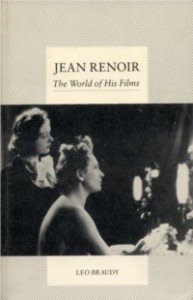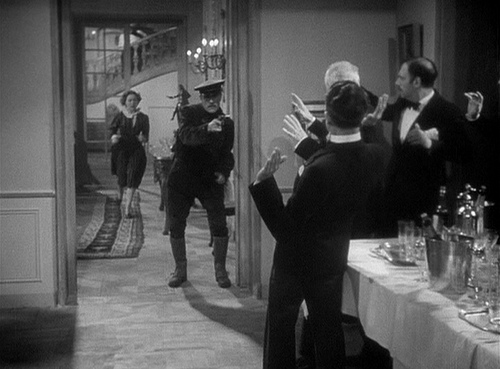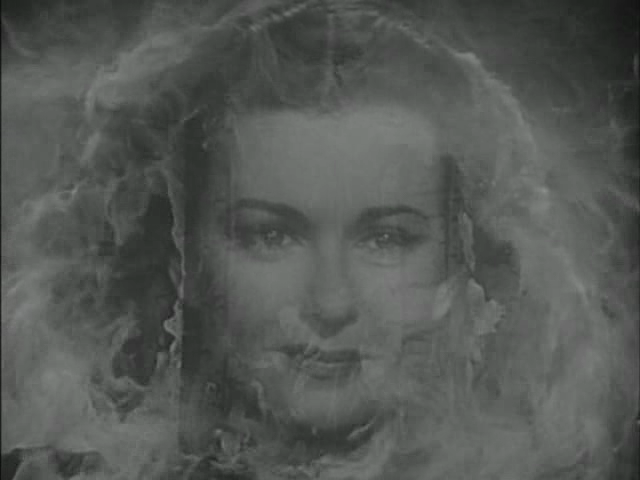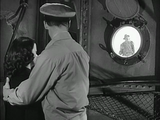From Film Comment (January-February 1973). — J.R.
JEAN RENOIR: THE WORLD OF HIS FILMS by Leo Braudy. Doubleday & Co., New York, 1972; hardcover $8.95; 286 pages; illustrations, index.
I’ve often wondered why a disproportionate amount of bad film criticism comes from English teachers. One would suppose that anyone devoted to narrative, lyric and dramatic structures would have some sensitivity for and interest in movies, but look at the recent issues of literary magazines like Modern Occasions, Partisan Review and The New York Review of Books and see what they usually have to offer in their “movie chronicles”: bilious, solipsistic professors who waste their time at EASY RIDER and THE GRADUATE (or DEATH IN VENICE and THE GO-BETWEEN) and then conclude that film is a “low art” or an overrated medium because these works don’t live up to the claims of their publicists. Even a critic like Stanley Kauffmann — who should know better — will complain (in a recent Film Comment) that “a list of memorable foreign films” for 1970 would only run to three or four titles, implicitly making the assumption that he’s seen all the likely candidates: a standard literary procedure, at least in America.
Fortunately, Leo Braudy, an English teacher, shares none of the false snobbery and little of the myopia about film that tends to plague his profession. In fact, his study of Renoir’s films is the most complete we have had so far in English– judicious, well-balanced, harmonious and achieved. But the specter of English teaching nonetheless hangs over his writing, and what might have been an indispensable study is instead a reasonable but limited one.
The first and best chapter of his book persuasively outlines some of the limitations of previous Renoir criticism: “bland” or “cultic” celebrations, oversimplified identifications of Renoir with his painter-father, and narrow or incomplete accounts of Renoir’s uses of (and attitudes towards) “nature” and “theatre.” Making his way through all of Renoir’s available work, Braudy skillfully avoids each of these pitfalls, and turns the latter question into the richest single concern of his study. But by orbiting Renoir’s films around four thematic chapters, he manages to minimize the singularity of separate works, and the key subject remains “the world of his films” — a detailed map of Renoirville — rather than the discrete entities that compose this oeuvre.
Curiously, Braudy’s tabulation of the differences and similarities of thematic threads as they weave through the films is almost identical to the “grids” of the English structuralist critics in Cinema: remove the numbered outline form and diagrams from the latter, and one is left with a rather old-fashioned (if functional) critical methodology. Thematic models and overviews have their uses, of course, but their illumination of the films can only be partial and fragmentary because they are not bound up in the process of watching them. Proposing or recognizing systems after the fact gives the mind something to play with, yet something in the life of the films becomes deadened — particularly the private laws by which they engender their separate identities. Cage them in a zoo as variants of a single species and they wilt, grow indifferent. Braudy tells us, for instance, how the “barren beach” with its “hulks of ships” in THE WOMAN ON THE BEACH is similar to the one in LE CRIME DE MONSIEUR LANGE; that “unlike Tom Keefer in SWAMP WATER or Sam Tucker in THE SOUTHERNER, Tod Butler finds no vitality or self-renewal in his isolation from society”; that “water in WOMAN ON THE BEACH achieves the malevolent potential it has always had in Renoir’s films to be an image of social and personal uncertainty.” One can agree with these notions each while one winces at the way Braudy expresses them, but somehow the unique bitterness and savagery of Renoir’s last American film fails to come across. Elsewhere, Braudy glosses over the weak portrayal of “the only . . . real Indian character” in THE RIVER by explaining that “this sense of alienation from the ‘real’ India is surely Renoir’s point … It is as if Renoir has mingled the isolated house of WOMAN ON THE BEACH with the family strength and optimism of THE SOUTHERNER.” Perhaps Renoir has; but this fails to account for the placement of the film’s central message (“Consent”) in the mouth of an unconvincing mannequin.
Ultimately, “the world” of Jean Renoir is a literary notion that can only exist between the covers of a book; we can never see it on a screen. To get into the essentials of what happens in a Renoir film, one must turn to Noël Burch’s analysis of NANA in Praxis du cinéma or André Bazin’s of LE CRIME DE MONSIEUR LANGE in his posthumous Renoir volume (both scheduled for publication in English). Unlike these gentlemen, Braudy refuses to get hung up on details. Andrew Sarris has described Renoir’s career as “a river of personal expression”; taking the metaphor literally, Braudy spends his time sailing up and down the river, with no final destination: each observation appears to be made only “in passing.” If only the boat would capsize, he’d at least get his feet wet. As he states in his introduction, his book “sketches some problems and provides some tentative answers.” Fair enough. But what role do the films play in this game? Are they the answers, or are they the problems?




